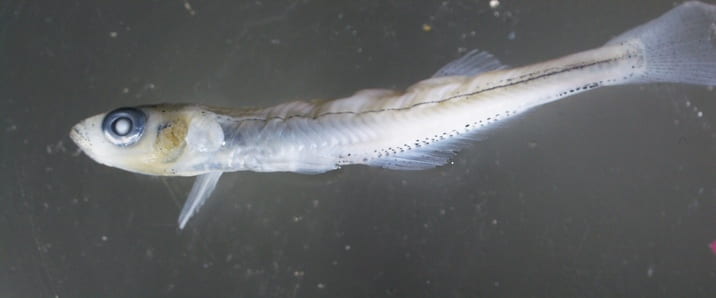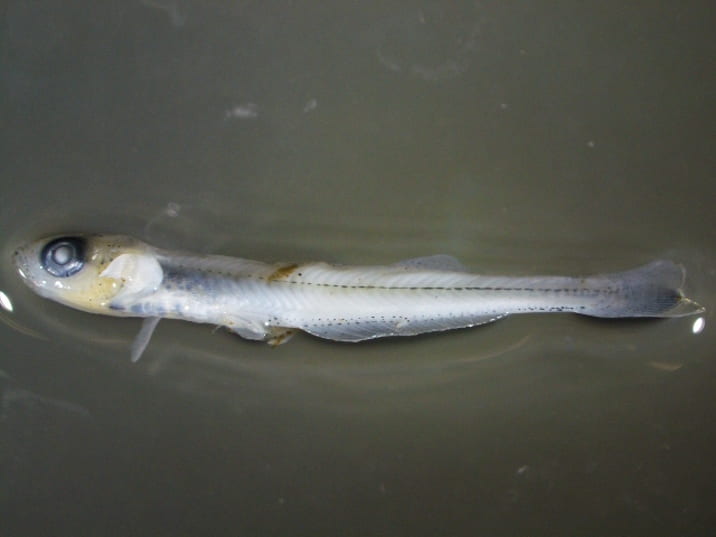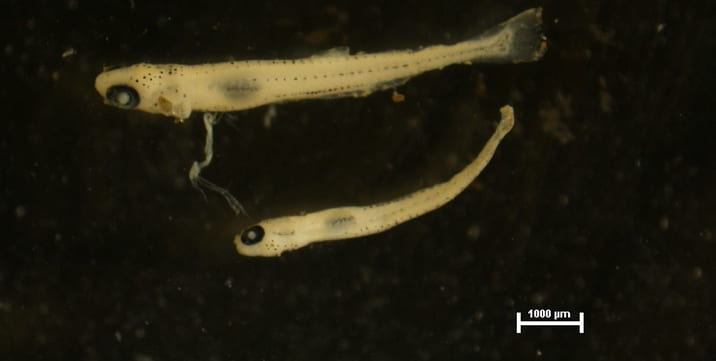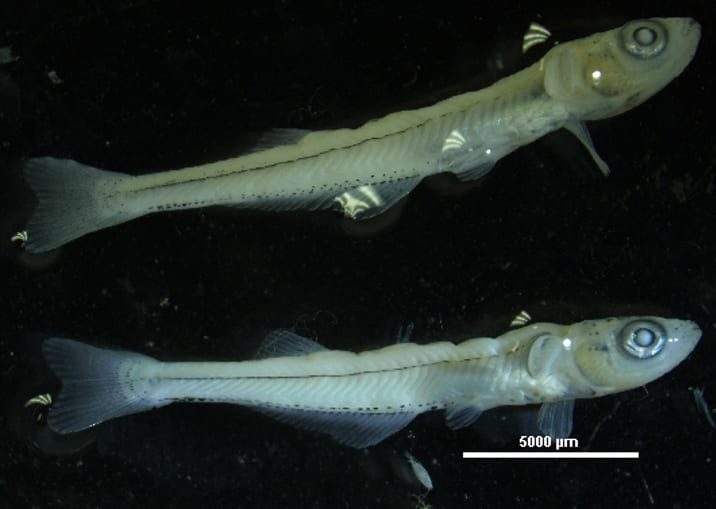Key Characteristics:
- More post-anal myomeres than pre-anal. Post-anal count greater than 25.
- Sleek slender bodies, like a minnow
- Lateral stripe that solidifies as they age.
- Triangle shaped fins
- Scattered pigment forming a circle on the head
- White bodies with nice defined markings
- Myomeres tend to be well defined and easy to count.

Larval Brook Silverside. United States Fish Wildlife Service. Calumet Harbor (Chicago, IL). Brianna McDowell. 2017.

Larval Brook Silverside. United States Fish Wildlife Service. Calumet Harbor (Chicago, IL). Brianna McDowell. 2017.

REPLACE Larval Brook Silverside. United States Fish Wildlife Service. Calumet Harbor (Chicago, IL). Brianna McDowell. 2017.

Two Larval Brook Silversides. 18.84 mm. United States Fish Wildlife Service. Calumet Harbor (Chicago, IL). Ashley Smith. 2017.
- Body not elongated, eel-shaped, round in transverse section, uniformly pigmented (1B)
- Chin barbels absent (3B)
- Snout short, its length usually less than 10% TL; median fins otherwise (5B)
- Median fins or finfolds showing distinct separation (7B)
- No adipose fin, or demarcation of one, in finfold (10B)
- Preanal myomeres significantly less than postanal myomeres (difference greater than five myomeres) (14B)
- Postanal myomeres less than 35, total myomeres less than 50, chin barbel absent (16B)
- Postanal myomeres greater than or equal to 25, preanal length less than or equal to 40% TL (17A)
- Atherinidae – Silversides
Adult History
- Physical Description
- Beak-like mouth, silver-colored appearance, small teeth, two dorsal fines (first dorsal fin: 4 spines/second: 1 spine with 9-11 rays), elongated anal fin with 20-26 rays and 1 spine
- Spawning Habitat
- Along the shores of lakes, rivers, and streams
- Around 1 meter deep
- Spawning Substrate
- Eggs deposited over gravel, aquatic vegetation, and sand
- Attach to vegetation using a long filament
- Spawning Behavior
- No nest built or parental care
- Pair of fish swim towards the bottom to release eggs and sperm
- Regulated by light intensity (egg/larvae growth)
- Most adults die after spawning
- Time of Year
- May – July in Lake Michigan
- Spawning typically takes place at water temperatures of 65-75°F
- Diet
- Small crustaceans, aquatic and terrestrial insects, flying insects, and invertebrates

